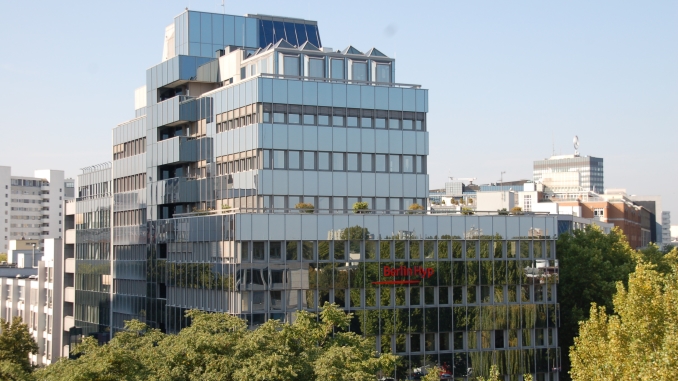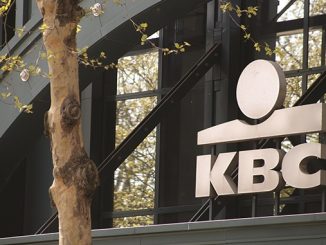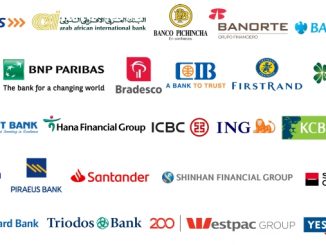
Berlin Hyp sold over half a EUR500m eight year green Pfandbrief to investors classified as green at the tightest spread of any euro benchmark covered bond this year on Wednesday, in what head of funding and IR Bodo Winkler hailed as an amazing result, even if yield moves made pricing “a little bizarre”.
The German lender’s latest transaction is its fourth Green Pfandbrief and seventh green bond overall, maintaining its position as the leading European bank issuer of green bonds. Berlin Hyp in April updated its framework, where the use of proceeds are earmarked for financing green buildings.
Having collected sufficient assets to launch the new, EUR500m no-grow issue, Berlin Hyp announced the mandate for the trade on Tuesday. On Wednesday morning, leads Commerzbank, Crédit Agricole, HSBC, JP Morgan and LBBW built a book of some EUR1.7bn and were able to tighten the spread from guidance of 1bp over mid-swaps to minus 3bp – 1bp tighter than any euro benchmark covered bond this year, and roughly flat to fair value, according to a banker at the leads.
“For us, this was really an amazing deal,” Winkler (pictured) told Sustainabonds. “We had a beautiful order book of a quality that is very rare: it had more green accounts involved than we have witnessed on any of our previous green bonds, and I have never seen such a high share of a German Pfandbrief go to foreign investors.”
 Accounts classified by the leads and the issuer as green were allocated 51% of the new issue, the first time their share has exceeded half for Berlin Hyp, while international investors were allocated 58.5%.
Accounts classified by the leads and the issuer as green were allocated 51% of the new issue, the first time their share has exceeded half for Berlin Hyp, while international investors were allocated 58.5%.
“We again saw in the book a couple of investors who have a new green mandate on board, and it was very nice that they bought into our green Pfandbrief,” added Winkler. “And we saw others who would not necessarily have bought a Pfandbrief when investing into green bonds, because of the tight spreads.”
Germany was allocated 41.5%, the Nordics 13.0%, the UK 8.9%, Asia 8.4%, France 8.2%, Austria and Switzerland 7.2%, the Netherlands 4.3%, and others 8.5%, with 15 countries involved. Banks took 48.3%, funds 30%, and central banks and official institutions 21.7%.
“Green opens a few pockets that might otherwise have been shut,” said a syndicate banker away from the leads. “It was very decently oversubscribed.”
Berlin Hyp’s eight year Pfandbrief had been expected to be the longest-dated negative yielding benchmark euro covered bond, and hence something of a test of investor appetite at the new lows. But thanks to a back-up in yields on Wednesday – with the yield on the 10 year Bund making its biggest upward move in over a year – it ended up being priced at a zero yield.
“When we prepared this deal last week, we were very sure that it would come with a negative yield, because then there was only one direction, and that was tighter and tighter swaps,” said Winkler. “And until the last minute before pricing it was not clear whether this would have a negative or a positive yield – in the end, it was exactly 0.000.
“It was a little bizarre.”
The issuer had anyway been relaxed about coming to market with what could have been the longest negative yielding euro benchmark covered bond, according to Winkler. In March 2016 it sold the first negative yielding euro benchmark, and followed this up with a second in November 2017.
“First of all, Berlin Hyp has experience in issuing bonds with a negative yield,” said Winkler. “So we were not afraid.
“This is nonetheless a little bit different than in 2016 and 2017, when our three and four year issues had slightly negative yields. If you would have issued a three year covered bond yesterday, the yield would have been close to the deposit rate, -0.40%. That’s a different world.
“Speaking to investors about their opinions towards negative yields in general, I have the feeling that an increasing number of investors have got used to that phenomenon, as long as it is not heavily negative.”
The eight year trade was Berlin Hyp’s second euro benchmark Pfandbrief of the year, following a EUR500m 10 year at minus 2bp in May, and Winkler said the issuer can be expected at least once more this year.
“I don’t know whether we’ll be able to print another green one, but I wouldn’t rule it out at this point, as our green finance business is developing nicely.”



